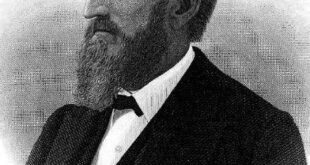The New-York Historical Society is currently hosting an exhibition called “Women’s Work,” which highlights the often overlooked history of women’s labor throughout the centuries. The exhibition features 45 objects from the museum’s collection that demonstrate the various roles women have played in New York City society and how different activities have been considered “women’s work” at different times.
The exhibition aims to tell the stories and histories of diverse women while also challenging the stereotype of women’s work. It explores the distinction between the public and private spheres, as well as the divisions between men’s work and women’s work. The exhibition’s co-curator, Anna Danziger Halperin, explains that the show intends to blur these distinctions and emphasize the fact that women have always worked.
Danziger Halperin discusses five key objects in the exhibition that illustrate the evolution of women’s work in New York City. One object is a mahogany cradle from the early 19th century, which symbolizes caregiving, often associated with women’s work. The cradle belonged to a wealthy and politically influential family, and it is believed that Black nurses cared for the infants in the cradle, highlighting the unpaid labor of women under indentures.
Another featured object is a pin-back button from the National Welfare Rights Organization, which was active in the late 1960s and early 1970s. This organization, led mostly by single women of color, fought against social policies that forced women to work instead of taking care of their families. The button represents the intersection of the civil rights movement, women’s liberation, and antipoverty activism.
A Haudenosaunee beaded pincushion from the late 19th century demonstrates how beadwork was associated with women’s work in Indigenous groups. As white settlers pushed Indigenous communities out of their lands, some women adapted their traditional beadwork skills to create souvenirs for tourists. This entrepreneurial and creative use of traditionally feminine craft reflects the need for income when traditional livelihoods became unsustainable.
A portrait of Ann Haviland, a professional perfumer, and a photograph by Jessie Tarbox Beals highlight two women who entered the professional world in the late 19th and early 20th centuries. Haviland’s portrait showcases her scientific expertise in creating perfumes, while Beals, a professional photographer, captured images of people at work. Both women embodied the “new woman” of their time, defying traditional gender roles and excelling in their respective fields.
Through these objects and others, the “Women’s Work” exhibition at the New-York Historical Society sheds light on the diverse and often unrecognized contributions of women throughout the city’s history. It challenges societal norms and stereotypes surrounding women’s work while emphasizing the importance and value of women’s labor.
 Mind Uncharted Explore. Discover. Learn.
Mind Uncharted Explore. Discover. Learn.




